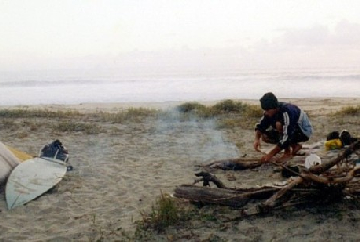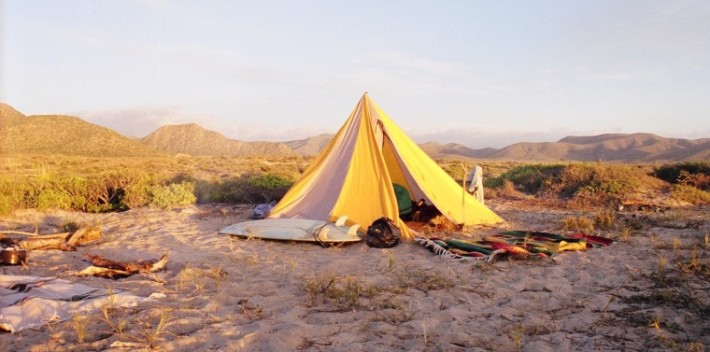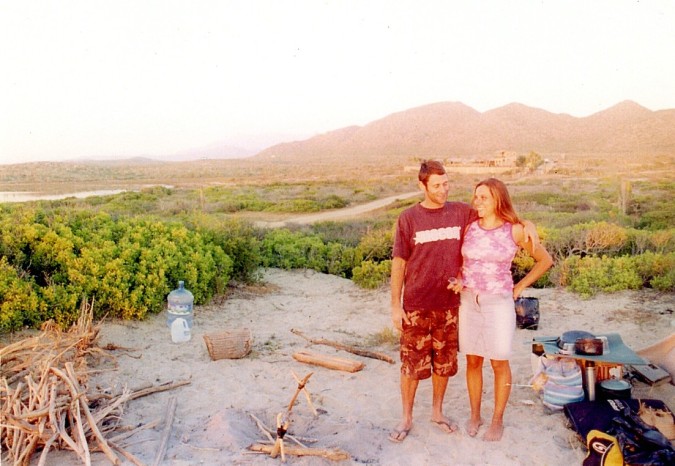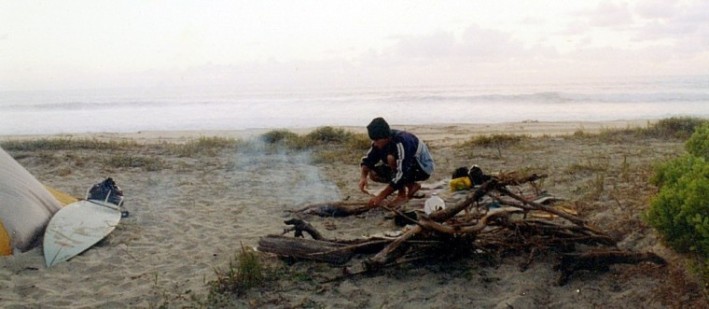My camp in Baja California. Photo: Laura Bernhein
I’VE LEARNED MORE about camping from surf-trips than anything else. The reason is simple: the goal on a surf trip is to spend as long as possible in one place.
Staying put allows you to get into the flow of the terrain, to figure out weather patterns, tide, winds, how the sun moves across the sky, when and where there is shade, when and where to avoid insects, where you can find firewood, water, and so many other things that you’d never learn if you were just quickly trekking through.
It also teaches you all these little tricks: how to make do with less, how to cook over a fire, how to craft makeshift furniture, how to keep sand out of your food–things that take a lot of trial and error to really lock down.
The following tips are been collected from over years’ worth of days and nights spent living on beaches both desert and tropical throughout the Pacific coast of Mexico, Central, and South America.



